With all 'D.O.' respect, osteopathy navigates medicine’s mainstream
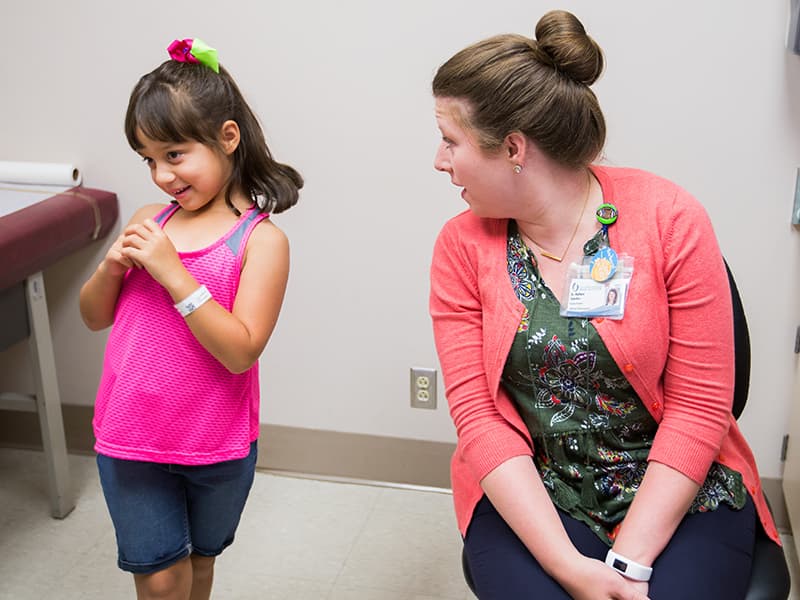
There are many reasons Dr. Barbara Saunders wears the letters “D.O.” on her white coat, instead of “M.D.” – not least of all this one: A Doctor of Osteopathic Medicine took good care of her mom.
“And the more I learned about osteopathy, the more I liked its approach to patient care,” said Saunders, assistant professor of pediatrics at the University of Mississippi Medical Center. “It took me far from home, though; that’s for sure.”
Saunders, chief of the Division of Child Development at UMMC, is an Alabama native who earned her D.O. and did her residency in Tulsa, Oklahoma, followed by a fellowship in Little Rock, Arkansas, before landing in Mississippi.
Like her, osteopathic medicine – dedicated to preventive care and the proposition that the body can heal itself – has come a long way.
Most students choose the more familiar, allopathic path, primarily lit by the philosophy of treating symptoms and diseases with drugs, radiation or surgery, and leading to a Doctor of Medicine, or M.D., the degree awarded in the School of Medicine here. But, more than ever, the osteopathic mindset is mainstream.
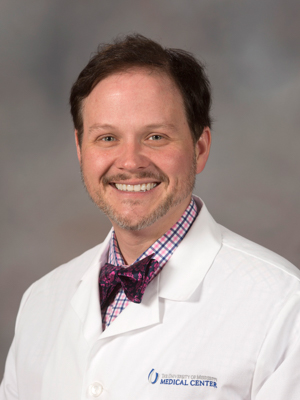
“Either way produces great physicians,” said Dr. David Norris. “Traditionally, the osteopathic approach has been more holistic, and students who are drawn to that are going to take that route.
“I’m glad to see it; I believe it’s the heart of what we should be doing as physicians: treating the whole person. We can get caught up in the pathology and forget there’s a person who is sick.”
It should be noted that Norris, an associate professor of family medicine and director of medical student programs for the Department of Family Medicine, is an M.D.
Also striking: Some of Norris’ allopathic students are drawn to what might be considered the DO brand: Osteopathic Manipulative Treatment, which is not normally part of an M.D.’s skill set.
Last year, however, and for the first time, OMT was made available to fourth-year medical students as an elective. With their added expertise about the connections that define the neuro-musculoskeletal system (nerves, muscles and bones), D.O.s use their hands to diagnose illness and injury, or to provide relief for patients with asthma, migraines, sinus problems and more.
This treatment complements – and may, at times, supplant -- drugs or surgery, according to the American Osteopathic Association.
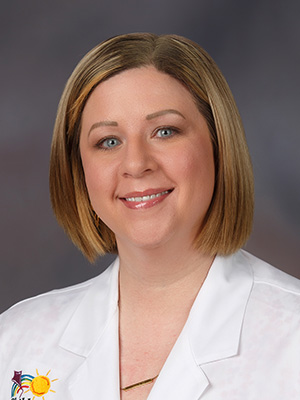
“Soft-tissue manipulation can get patients off a ventilator quicker than normal,” Saunders said.
In one case suited to a D.O.’s skills, a socially-challenged teenage girl suffered from frequent bouts of nausea at school. GI exams didn’t pinpoint the problem, nor did medication relieve it.
Finally, a D.O. discovered a nerve abnormality that undermined her digestive system; whenever her classmates made fun of her, the girl tensed up, which put pressure on the nerve, resulting in nausea. The case was presented years ago at an annual meeting of the National Association of Advisors for the Health Professions attended by Dr. Ed Williams, executive director of the Mississippi Osteopathic Medical Association.
“The doctor trained her to relax her spine whenever the tenseness came on,” Williams said, “and it worked, simply because of manipulation.”
A SHOW OF HANDS
Six medical students at UMMC will explore that kind of training come February, when the O.M.T. elective is taught again. Caleb Zumbro, in his fourth year of medical school, is among them.
“[Osteopathy] focuses on the anatomy you learn your first year in medical school, but isn’t stressed as much later on,” said Zumbro, a native of Bude in Franklin County. “And it’s another tool to help patients. My biggest hope is I’ll be able to keep it fresh enough in my mind to use those techniques during my residency.
“If not, I’ll just study on my own.”
Zumbro has already done more than that. “During my family medicine rotation, Dr. Ricks practiced it on me and another student,” he said.
He’s referring to Dr. Janet Ricks, an O.M.T. instructor who, truth be told, didn’t sense a clear difference between D.O. and M.D. training until she was a UMMC resident; and that’s when she, literally, felt it.
“I noticed that I was much more comfortable using my hands to diagnose a disease than the M.D. residents were,” said Ricks, a professor of family medicine, who earned her D.O. at what is now the Kansas City University of Medicine and Biosciences.
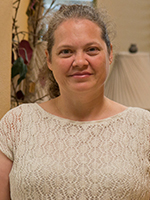
“Osteopathic medicine is very suited to primary care in general, and the family medicine program at UMMC has always been accepting of D.O.s,” said Ricks, who’s also the residency director of Osteopathic Family Medicine. “Some patients I treat sought me out because they have been treated by an osteopath before.
“Really, all the physicians share the philosophy that the body is a unit and should have the ability to heal itself.”
In the past, though, acceptance was an exception.
“I’ve never had any issues here,” said Ricks, who joined the UMMC faculty in 2007, “but physicians I know said that at one time they had to stand their ground.”
Osteopathy, in the beginning, was a kind of insurrection that followed another kind of revolt – the Civil War – during a period when many popular medications hurt more than they healed. Officially founded in 1853 by Dr. Andrew Taylor Still – the M.D. version – it was viewed as health reform movement. As with many such crusades, and well into the 20th century, the establishment chafed.
“When the first osteopathic physicians were licensed in this state, there was a lot of resistance from the medical community,” said Ricks, who was MOMA’s president until May. “Some hospitals did not want us to practice.”
Some patients, or even health professionals, may equate or confuse D.O.s with chiropractors; the latter focus on the back and spine, but, unlike osteopathic physicians, do not prescribe medicine or perform surgery, the MOMA website states.
“The view of some physicians is that D.O.s aren’t as well-trained as M.D.s,” Saunders said, “but I have not seen this in my practice here.”
PACE-SETTER
In Mississippi, D.O.s began their battle for acceptance in earnest in the 1970s. Into the breach stepped the late Dr. Henry Pace, a Ph.D. and the unofficial father of osteopathic medicine in the South, who fought for D.O.s’ right to be licensed.
“Henry Pace was a bull terrier,” said Williams, who worked with him. “He also passionately worked to put students into D.O. schools and have them return to the Southeast.”
Of the 6,219 physicians licensed in Mississippi as of August 2016, 407 were D.O.s, or 6.5 percent (another 68 were podiatrists), the Mississippi State Board of Medical Licensure’s website shows. Of the 10,142 doctors licensed by the MSBML, including out-of-state, 625 were osteopathic physicians, or 6 percent.
More D.O.s than ever are in the hopper, thanks to the opening in 2010 of the College of Osteopathic Medicine at William Carey University in Hattiesburg, one of only two four-year medical schools in the state.
“Having the school there is good for Mississippi,” Saunders said.
Its first class graduated in 2014 and some of those alumni are completing their residencies at UMMC, including Dr. Jeremy Rainey, an anesthesiologist on track for a critical care fellowship next summer at the renowned Cleveland Clinic.
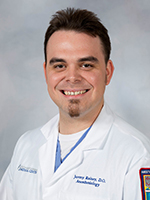
“It was intriguing to me to be in on the ground floor of the new medical school at William Carey,” said Rainey, a Jackson native, “but beyond that, the school’s mission is very focused on primary care. Its goal from the beginning was to get people into those fields.”
Those fields include family medicine pediatrics, obstetrics/gynecology, internal medicine and more. Just over half of D.O.s active in Mississippi were primary care physicians in 2014, the Association of American Medical Colleges reported in 2015, compared to about 34 percent of the state’s 5,178 active M.D.s that year.
In fact, the creation of the state’s second four-year medical school was touted as an effort to produce more primary care doctors in a state that ranks last in the number of physicians per 100,000 residents. It was also viewed as a way to accept quality students who may have been turned away because of class-size limitations at the School of Medicine in Jackson.
Each year, William Carey’s COM admits 100 students, compared to the UMMC school’s newly expanded figure of 155.
“About 75 percent of our students go into primary care,” said Dr. James Turner, dean of the William Carey’s COM and a D.O. “The vast majority come from rural and underserved communities. The No. 1 indicator of whether a graduate goes to an underserved area is that the student came from an underserved area.
“Our primary target area is the Gulf South, and I’m very optimistic that we will have a huge impact there.”
One of William Carey’s Gulf South recruits, Louisiana native Dr. Richard Calderone, was president of the college’s first graduating class and is completing his residency in internal medicine and pediatrics – med-peds for short – at UMMC.
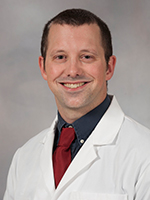
“I chose UMMC for my residency because the program here does a great job of integrating the two specialties,” he said. “Also, there’s been a complete integration between D.O.s and M.D.s. As far as the attitudes about D.O.s here, I don’t believe anyone ever points out differences, except in discussions on musculoskeletal complaints; I’m asked about it because of my training.
“Otherwise, unless you look at the letters on my white coat, you probably wouldn’t know anything is different.”
One day – the plan says by 2020 – there will be fewer differences between allopathic and osteopathic residencies, once the now-separate accrediting orbits blend, Williams said.
That will certainly have an impact in Mississippi, where osteopathic opportunities in post-graduate medical education are not scarce: All residency programs in Mississippi are open to applications from D.O.s. In addition, AOA-accredited osteopathic-focused residency, internship and/or fellowship programs are in place at Merit Health Wesley in Hattiesburg, East Central Health Net in Meridian, and Corinth’s Magnolia Regional Health Center.
MRHC faculty member Dr. Seger Morris, a third-generation D.O., said that, in July, the center admitted its first M.D., an internal medicine resident, and more will follow. Two of the eight core faculty members are M.D.s.
While approval of D.O.s has “lagged” in Mississippi compared to some other states, Morris said, “the rapid expansion of our profession over the last 20 to 30 years has made it hard to ignore our influence in health care.”

ON THE WHOLE …
One D.O. in particular has influenced the health care of Lana Puga, 6, and her brother, John Wesley Bishop, 4. Every four or five months, their legal guardians, Pearlie and Daniel Warren, drive them an hour to Jackson from their home in the Mount Olive area.
The payoff is a half-hour or longer visit in a UMMC child development clinic at the Select Specialty Hospital on Ridgewood Road, where Saunders treats young patients for anxiety, depression, sleep disorders, ADHD and more.
While Saunders does not use OMT on her patients, the D.O.’s preventive, holistic approach is suited to her specialty, she said. “A lot of times we serve as a kind of therapist for the distressed parent. In some ways, we are a physician for the whole family.”
Inside an exam room, Lana and John Wesley tell Saunders about their summer, explore boxes of blocks and toys, and finally head for a cabinet to pick out free books. Asked if it matters to her that Saunders is a D.O. instead of an M.D., Pearlie Warren shakes her head.
“No, not as long as she’s a good doctor. She’s been great.”
DO MATH
- Number of DOs practicing in the U.S.: 100,000-plus
- Number of accredited colleges of osteopathic medicine (COMs) nationwide: 33
- Number of COMs at private institutions: 27
- Number of states with COMs: 31
- Percentage of all U.S. medical students who are future Dos: 20-plus
- Number of future DOs educated during the 2016-2017 academic year: 27,000
Sources: American Osteopathic Association, American Association of Colleges of Osteopathic Medicine
---------------
SIMILARITIES
DOs and MDs:
- prescribe medication;
- are licensed to diagnose, treat, and perform surgery;
- have undergraduate degrees, graduated from medical school, and have post-graduate training;
- are licensed by the state
- may pursue a specialty
- belong to the same health plans
- are equally accepted by the military.
DIFFERENCES
- DOs receive extra training in the musculoskeletal system.
- Osteopathic manipulative treatment (OMT) is incorporated in the training and practice of DOs. It emphasizes physicians’ use of hands to diagnose injury or illness.
SOURCE: Mississippi Osteopathic Medical Association


